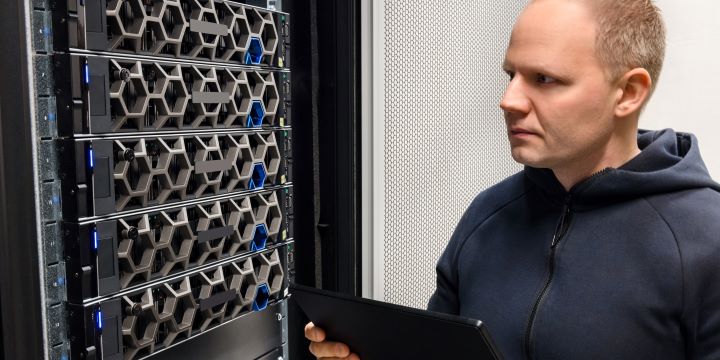SASE Explained: Revolutionizing Network and Security Infrastructure

The SASE approach combines networking and security capabilities into a single service, reducing enterprise complexity. This reduces the number of vendors they work with, the hardware required in branches, and the number of agents on end-user devices. Practitioners should prioritize a results-oriented approach, evaluating how well the implementation of their chosen solution delivers on each of the three pillars of SASE. This will enable them to identify problems and improve IT efficiency quickly.
Zero Trust
What is SASE? SASE (Secure Access Service Edge) is an architectural approach that integrates Zero Trust principles with cloud-based network and security services. SASE acts as a centralized control point, enforcing Zero Trust policies wherever users and devices connect, regardless of location or device type. It’s like a fortified border checkpoint, vigilant against threats irrespective of origin. Zero Trust and SASE forge a powerful alliance, transforming the digital landscape from a porous open house to a tightly guarded fortress, constantly on alert against even the most cunning intruders. Zero Trust is an architectural model based on the principle, “never trust, always verify.” This approach eliminates the implicit trust of traditional network perimeter firewall policies. It secures the modern attack surface by combining strong authentication methods with dynamic access control, preventing lateral movement, and providing Layer 7 threat prevention. A Zero Trust solution enables you to create, deploy, and test granular least privilege access policies for various applications. This allows you to reduce the number of privileged users on your systems, which can help prevent attacks. It also ensures that users are only granted the minimum level of permissions for each activity, which makes it more difficult for attackers to move laterally through the system.
Adaptive Authentication
As hackers become increasingly resourceful in finding holes in your security posture, your business needs to have a dynamic defense strategy. Adaptive authentication is one way to meet these demands by providing a security policy that adjusts to the unique risk of each user. It analyzes user behavior to create a profile that determines the most appropriate authentication method. This includes data like the user’s typing speed, websites accessed and applications used. Any deviation from this profile triggers additional authentication steps, thus protecting your organization from security threats. A SASE solution delivers this capability as a single service. The SASE framework tightly integrates networking and security functions on a unified cloud-native platform. This enables flexible edge functionality activation to support modern business agility and security requirements. It also eliminates the need to backhaul network traffic through a gauntlet of security devices in your data center, which reduces latency and improves performance. It also helps reduce costs by shifting up-front capital to a monthly subscription model and consolidating the number of hardware appliances and software agents IT has to manage.
Adaptive Access Control
The SASE framework takes a new approach to cybersecurity, rejecting the idea that any connection should be automatically deemed safe because it’s inside a network. Instead, it requires tighter access controls to ensure the person connecting is who they say they are. It uses a secure cloud-based platform consolidating networking and security capabilities to protect remote and mobile users, deliver a least-privileged model, and enforce consistent policy. These functions include WAN optimization, software-defined wide area networks (SD-WAN), a secure web gateway, CASB, and Zero Trust Network Access. These features allow for better control of incoming traffic, optimizing the flow and minimizing latency. They also make it easier to support applications and data in the cloud and to deliver a fast, uniform user experience. In addition, SASE removes management burdens from IT and reduces costs by providing network infrastructure as a service. IT teams can set policies centrally on a cloud-based management platform, which will be enforced at distributed points of presence close to end users. This helps to reduce IT costs and complexity while allowing for rapid scaling with minimal upfront investment.
Adaptive Routing
When DDoS or other attacks threaten a business, SASE networks act as a security gateway and intercept some of the attack traffic before reaching its target. This prevents it from contaminating the corporate network and minimizes the damage such an attack would cause. The networking side of SASE consists of a global fabric of points of presence (PoPs) that deliver a full range of WAN capabilities with low latency wherever users are working, including remote locations. The PoPs are built on a meshed traffic pattern to connect each user to nearby services without backhauling and other performance-limiting factors. Many SASE vendors offer hardware appliances to connect edge users to a PoP and software clients that handle connections over meshed links. However, a SASE solution should be an integrated platform rather than a collection of point solutions. The goal is to remove complexity from management and reduce costs with a single console, client and policy engine. A SASE solution should also have a strong track record for evaluating the context of each user, device and application to make better decisions about their access to enterprise data and services.
Adaptive Security
Adaptive security’s response layer evaluates risks not detected by the prevention or detection layers. This helps to limit vulnerability and lateral movement within the network. This is an essential part of the adaptive security model. Detecting threats quickly limits damage by stopping them before they can steal sensitive data or enter the organization’s systems. This is done by continuously monitoring system data, event logs and other information to uncover anomalies and prevent attacks. Another critical aspect of adaptive security is reducing the attack surface by scrutinizing software vulnerabilities, unsecured employee endpoint devices and servers with risky open ports. This is where big data plays a key role. Large data centers and cloud architectures house huge amounts of information that can be analyzed to spot patterns and identify threats. Using this intelligence, adaptive security can reduce the attack surface and increase business productivity.












